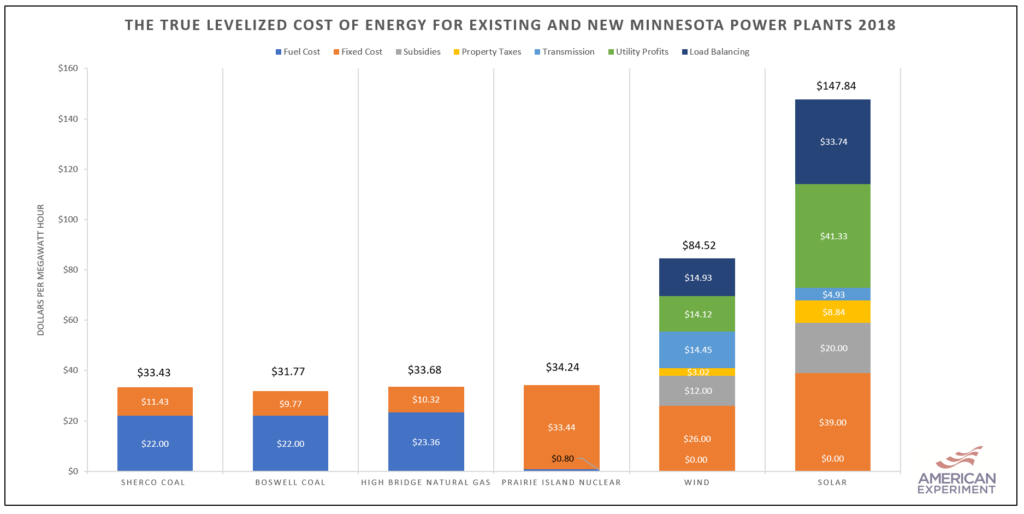Study: Solar Panels Reduce Nearby Property Values
A newly-released study from the University of Rhode Island (URI) has found that solar facilities reduce property values for nearby properties.
I’m generally skeptical about studies that claim to be able to model the impact of a given development on neighboring property values because I have reservations about many of the assumptions used to formulate them (sound familiar?), but I’d encourage you all to look at the methods used to come to these conclusions and decide for yourselves whether you think they are reasonable, or not.
Study Results: Solar is Driving Down Property Values
The study examined more than 400,000 housing transactions occurring within one to three miles of 208 different solar installations, meaning the findings are not simply a product of a small or cherry-picked sample.
“Our results suggest that solar installations negatively affect nearby property values…property values in the treatment group decline 1.7% (or $5,751) relative to the control group.”
“These findings suggest that solar arrays create local, negative externalities, and the average household annual willingness to pay to avoid these externalities is $279. This helps explain local concerns and opposition and gives pause to current practices of not including proximate residents in siting decisions or compensating them after siting has occurred.”
The study also found that homes that are built closer to solar installations suffer a greater decrease in property value than those that are further away:
“We find substantially larger negative impacts on homes located within 0.1 mile of solar installations (-7.0 percent).”
Reductions in property value were also higher in suburban areas than areas that are less heavily populated. SouthCoastToday reports suburban housing prices within a mile of the array dropped by 5 percent. This is probably why we don’t see many solar installations and we see no large, industrial wind turbines in ritzier Twin Cities suburbs.
Why should they have to have their property values diminished when they can push projects out into Greater Minnesota?
In all, the study found that solar installations reduced regional property values by about $1.66 billion.
Solar is A Net Loser, Even After Accounting for Externalities
Solar advocates almost always try to say that solar is lower cost than other sources of energy like coal, natural gas, or nuclear power by citing the subsidized cost of solar against the cost of building a new coal plant, gas plant, or nuclear power plant in Lazard’s Levelized Cost of Energy Analysis, but this is a dishonest comparison.
Electricity demand has been flat in the United States for years, meaning we don’t need new power plants. Therefore, the most honest comparison is to look at the cost of generating electricity at existing power plants against the unsubsidized cost of solar. One must also look at all the hidden costs of solar, like transmissions, utility profits, additional property taxes, and the cost of load balancing, or keeping reliable power sources online when the sun isn’t shining, or every single night.
Once these costs are accounted for, solar is far more expensive than traditional energy sources, as you can see in the graph below.

When caught in this lie, solar advocates usually like to turn the conversation to the supposed environmental benefits of solar, which mostly revolve around reducing carbon dioxide emissions. Solar advocates argue that yes, solar may look like it costs more, but once the environmental benefits are accounted for, it’s actually less expensive.
The URI study found this wasn’t the case regarding property values.
“Our estimates imply that the global positive external benefits of carbon mitigation are outweighed by local externalities costs. We find that, considering only externalities, the benefit-cost ratio is 0.46, with a net loss of $893 million.”
Authors of the study cautioned against trying to apply the findings of this study to other areas, and I think that’s the correct thing to do because the areas studies have higher population density than most areas. However, it certainly lends credence to those who fear that their property values will be affected by allowing solar installations to be cited too close to their property.
At the end of the day, solar panels require a lot of land. The study found that it requires about 5 acres of land for each MW of capacity, and that the facilities create local land use “disamenities,” or nuisances. Trying to run our electric grid on wind and solar (which is a very bad idea) will inevitably result in more land use conflicts, and local residents are getting fed up with these projects all over the country. It appears some of their concerns are founded in reality.